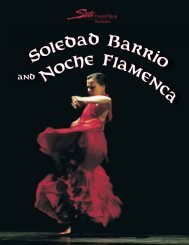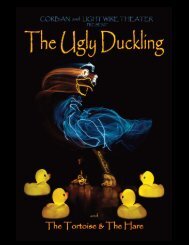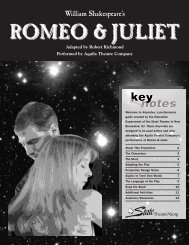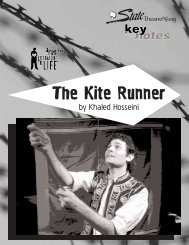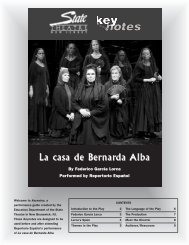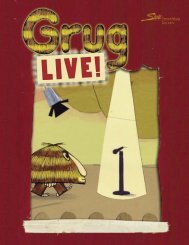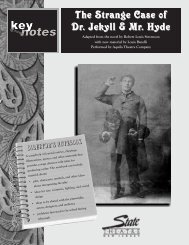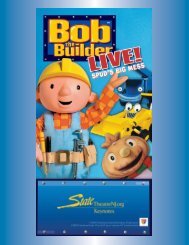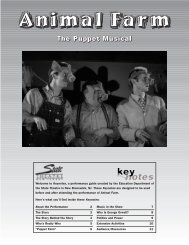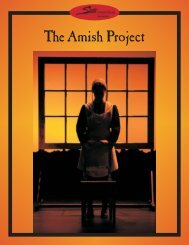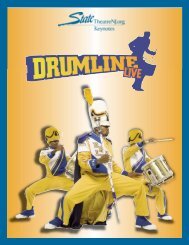Parsons Dance & East Village Opera Company - State Theatre
Parsons Dance & East Village Opera Company - State Theatre
Parsons Dance & East Village Opera Company - State Theatre
- No tags were found...
Create successful ePaper yourself
Turn your PDF publications into a flip-book with our unique Google optimized e-Paper software.
C AUGHT4The program opens with the company’s signature work,Caught. This solo piece has been performed hundreds oftimes for more than 28 years, and is included in just aboutevery David <strong>Parsons</strong> <strong>Dance</strong> performance. It is set to RobertFripp's eerie score of phased electric guitars.Caught plays with optical illusion through the precisecoordination of lighting and movement. This demanding piecerequires the soloist to perform more than 100 leaps in lessthan six minutes. It begins with the dancer standing indarkness. Moving from spotlight to spotlight, he becomesvisible, performs a variety of movements, then dissappearsagain into the darkness. A moment later, he reappears in adifferent spot and executes more moves. Then, with no stringsor wires, the dancer flies. In a series of strobe-lit ‘snapshots’that flash very rapidly, he appears to levitate across the stagewithout touching down. The illusion is created by the dancer,whose brief airborne moments are ‘caught’ in the momentaryflash of light. As he travels across the stage performing leaps,tilts, and splits, he holds a control that allows him to time thestrobe light to illuminate him only while he is in midair.photo: Gene SchiavoneCaught, pictured above with dancer Miguel Quinones,was originally choreographed and performed by David<strong>Parsons</strong> himself. His performance is captured on video atwww.youtube.com/watch?v=JfVXRn6dNJ0DAVID PARSONS ON CAUGHTFrom an interview on PBS’ EGG - The Arts ShowI think I have always beenfascinated with air time—thefeeling of freedom. I mean,man has always tried to getoff the planet, and thefeeling when you're floatingin the air, that moment whenyour hair just gets to thatpoint—I always try tocapture that in dance, and in using trampolines in theater.It's always a very exciting moment for me. I think we got thisthing where everybody on the planet has dreamt of flying;I'm still looking for someone who hasn't. And it's anincredible thing to stumble upon as an artist—that question.I think as an artist you're constantly looking for things toinspire you, and one of the things that I picked wasphotography and light, how light captures images. (I tookphotography in high school.) So, photography has definitelyinspired and changed the way I choreograph.The idea of Caught came from working withphotographers. You would go up and you would hit a shape,and then you would change it slightly. And you got so goodat just knowing where that shape was from an outside eyeand I thought, “Well, what if I could control that light andmake a dance just in the air, but you could only see it whenthe strobe went off?” And that's how Caught was born; Istarted experimenting with a dark room, with a strobe light.I performed Caught for nine years as a solo, but only Idid it. Then I started to teach other dancers the piece andnow many people do it: men and women. One of my mostwonderful experiences in dance was working with MikhailBaryshnikov. He saw Caught, and we worked on it togetherin a studio at the Metropolitan <strong>Opera</strong> House in New York,and it was just a wonderful afternoon watching him leaparound. It was like watching hundreds of photographs of thisgreat dancer live.



